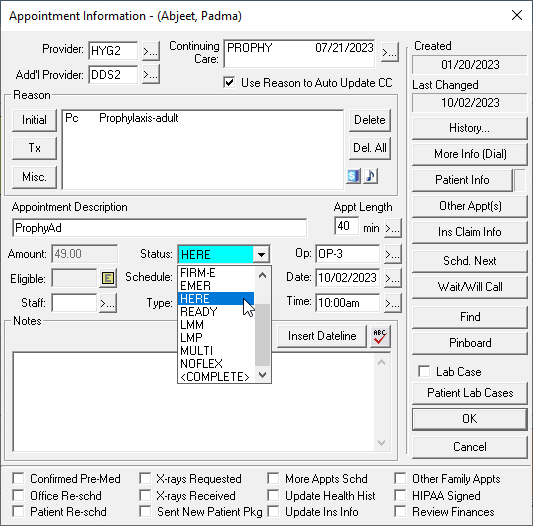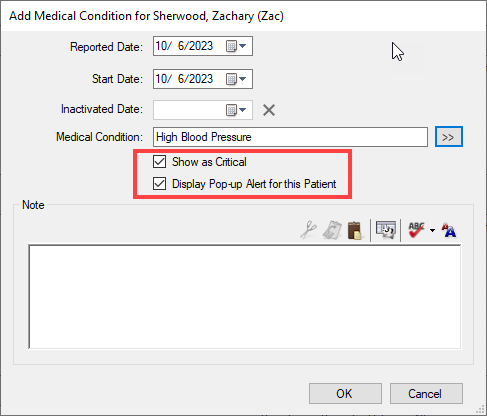In dental practices, good communication between team members is key to having a successful day. Every team member should be aware of things like when patients are ready to be seated in the operatory, if there are any critical changes to the patient’s health history, and if there is an outstanding balance that needs to be collected.
I personally observed the need for good communication recently when working with an office experiencing a temporary staffing shortage. This office of seven (including the doctor) found themselves understaffed one week when one team member was on vacation, another team member was sick, and a third was in a car accident and unable to work. This office had to rely on their communication skills and three key features in Dentrix to facilitate communication with one another in order to provide the same quality of care to their scheduled patients during that challenging week.
Keep Appointment Statuses Updated
You can use the appointment status in the Dentrix Appointment Book to indicate when the patient has arrived at the office. This can include time where they are filling out paperwork or discussing insurance with the front desk. Update their status when they are ready to be seated in the operatory so the clinical team knows when to come and get them from the waiting room. Next, update their status to indicate that they have been seated in the operatory. By keeping appointment statuses updated, the entire team can know where each patient is within the office. And when the appointment is set complete, the appointment will turn grey, showing that the patient is finished.

View Health History Updates
The Health History in Dentrix has customizable options to display medical conditions, allergies and medications as critical, and you have an option for a pop-up message. This is a great feature so everyone in the office is aware of any important health concerns the patient may have.

Make Use of Patient Visit Forms and Route Slips
Patient visit forms and route slips are great communication tools, especially for offices that no longer use paper charts. Both options are helpful in the handoff from the clinical team to the administrative team. Both the patient visit form and the route slip contain important information, such as any outstanding account balances, outstanding treatment, today’s scheduled procedures, continuing care information, and more. I like to use the patient visit forms or route slips to indicate if there were any changes made to that day’s scheduled procedures. This can be very helpful if the administrative team is on the phone and unable to give the clinical team member their full attention when the patient is ready to check out. Both the route slip and patient visit form also show if the patient has an outstanding balance, which the administrative team can be sure to collect before the patient leaves.
Having good communication in a dental office is critical for all team members to be aware of where patients are in the office and what needs to be done to provide them with the best care. In the case of the understaffed office I mentioned, good communication skills combined with these Dentrix features allowed them to provide the same high quality of care to their patients, despite having only half of their team in the office that week.
Learn More
For additional information, see the following:
- Customizing Appointment Status
- An Office Manager’s Favorite Health History Features
- Route Slips or Patient Visit Forms? Which is Right For Your Office?
By Charlotte Skaggs, Certified Dentrix Trainer





